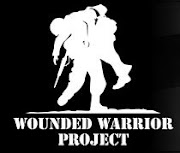
April 15, 2006 would prove to be unlike any other day during his near 800 hours of combat flight in Iraq. In Mosul around mid-day, Zanders received a "911" call from a nearby combat outpost. Zanders took off in one of two Kiowa Warrior helicopters from Forward Operating Base Mosul and arrived on site in minutes. As they approached, they saw gunfire and explosions blackening the desert. The heavy dust rising from the chaos obstructed the choppers’ view of the kill-zone, forcing them to fly as close to the ground as possible. After frantic communiqués from the combat outpost warning their position could be overrun, the Kiowas helicopters went into action. Zanders’ sister ship took the lead. Both choppers unloaded on the attacking insurgents with volleys of high explosive rockets and 50 caliber machine gun fire.
After several low-flying orbits of the battlefield, the other chopper took hostile fire and was forced to pull out of the fight. The pilot had smelled gas and performed an emergency landing within a kilometer of the engagement zone to assess the damage. Zanders kept one eye on the downed aircrew and the other on the still pitched battle.
The Army pilots had feared such a situation could arise. With insurgents threatening to overwhelm their haphazard landing zone, the pilots knew there was no time to wait. Without pause, Zanders landed next to the downed crew – the most vulnerable sort of maneuver for a helicopter – and signaled to the pilot and copilot of the fellow Warrior to climb onto his craft’s weapons struts and hold on. With a "thumbs up" from the precariously secured aircrew, Zanders climbed back into the sky, and flew at over 80 knots back to FOB Mosul.
Flying through the Iraqi air with an additional aircrew barely on board made for a challenging flight in the insurgent–contested territory. In the air, as Zanders flew passed a Black Hawk helicopter that had scrambled to perform the rescue, Zanders saw the surprise on the face of the passing pilots as they took in the sight of the downed aircrew strapped to the side of Zanders’ chopper. That heroic act – which Zanders modestly called "instinct" – was later confirmed to be the first ever attempted of its kind.
Successfully evacuating the aircrew at the base, Zanders prepared to head back out. The situation at the besieged combat outpost was stabilized while he refueled and rearmed, but instead of debriefing, he took off again to provide security around the downed chopper until it could be recovered.
After several low-flying orbits of the battlefield, the other chopper took hostile fire and was forced to pull out of the fight. The pilot had smelled gas and performed an emergency landing within a kilometer of the engagement zone to assess the damage. Zanders kept one eye on the downed aircrew and the other on the still pitched battle.
The Army pilots had feared such a situation could arise. With insurgents threatening to overwhelm their haphazard landing zone, the pilots knew there was no time to wait. Without pause, Zanders landed next to the downed crew – the most vulnerable sort of maneuver for a helicopter – and signaled to the pilot and copilot of the fellow Warrior to climb onto his craft’s weapons struts and hold on. With a "thumbs up" from the precariously secured aircrew, Zanders climbed back into the sky, and flew at over 80 knots back to FOB Mosul.
Flying through the Iraqi air with an additional aircrew barely on board made for a challenging flight in the insurgent–contested territory. In the air, as Zanders flew passed a Black Hawk helicopter that had scrambled to perform the rescue, Zanders saw the surprise on the face of the passing pilots as they took in the sight of the downed aircrew strapped to the side of Zanders’ chopper. That heroic act – which Zanders modestly called "instinct" – was later confirmed to be the first ever attempted of its kind.
Successfully evacuating the aircrew at the base, Zanders prepared to head back out. The situation at the besieged combat outpost was stabilized while he refueled and rearmed, but instead of debriefing, he took off again to provide security around the downed chopper until it could be recovered.
For his efforts, Zanders was awarded the Distinguished Flying Cross and the Bronze Star Medal






No comments:
Post a Comment